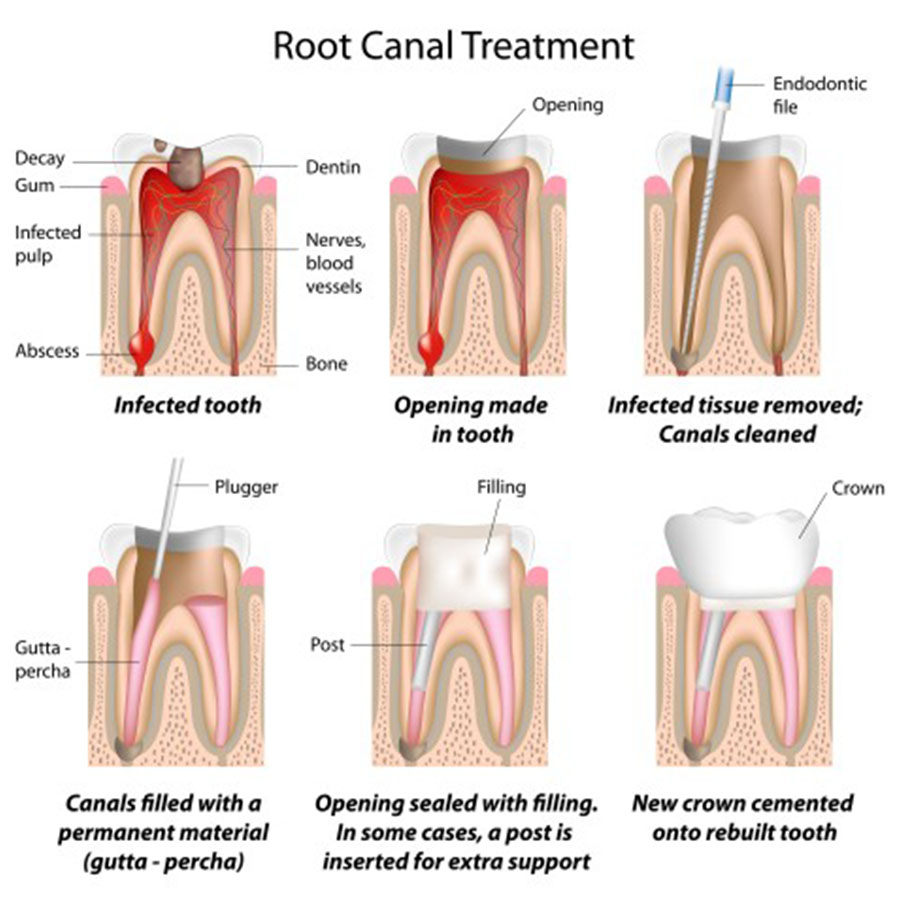 Trauma or infection that impacts the nerve of a tooth will often result in the need for root canal therapy. There may be sensitivity to temperature, discomfort, swelling, or for some, no symptoms may be present. Your dentist has tools that help to diagnose the situation, but most often an x-ray is the determining factor.
Trauma or infection that impacts the nerve of a tooth will often result in the need for root canal therapy. There may be sensitivity to temperature, discomfort, swelling, or for some, no symptoms may be present. Your dentist has tools that help to diagnose the situation, but most often an x-ray is the determining factor.
A root canal is considered by many to be an unpleasant experience, but these are people who likely have never undergone root canal therapy. The process is no more uncomfortable than having a cavity repaired.
Prior to treatment, x-rays are needed to determine how many roots are involved and their position. Once the tooth has been numbed, it is secured from surrounding teeth often with the use of a rubber dam. This serves multiple purposes … saliva is blocked to keep the area dry and any debris removed will not be swallowed. An apparatus is placed to hold your mouth open making it easier on both the patient and the dentist.
A small access point is created in the tooth to reach the root. A “file” is used to wrap the contents of the root (nerve, pulp, and blood) around it for removal and the root is flushed; this process is done for each root of the tooth. It is imperative each root be thoroughly cleared; if not, the procedure may need to be redone.
If infection is present, an antibiotic may be placed directly into the root to prevent spreading. At this point the patient may be asked to wait to be sure the infection is healed before proceeding to the next step.
The access point must eventually be sealed. Depending on the tooth involved, this can be done with a tooth colored resin material; however, back teeth will likely be sealed using a dental crown. With the root’s contents removed, the tooth sealed with a crown is preserved. Without root canal therapy, tooth extraction will likely be required.
You will be shown how to floss around a tooth with a crown; even though the nerve is gone, brushing and flossing daily are still required to keep the rest of the tooth and surrounding gum tissue healthy. Root canal therapy may allow you to keep this tooth in place for life.

